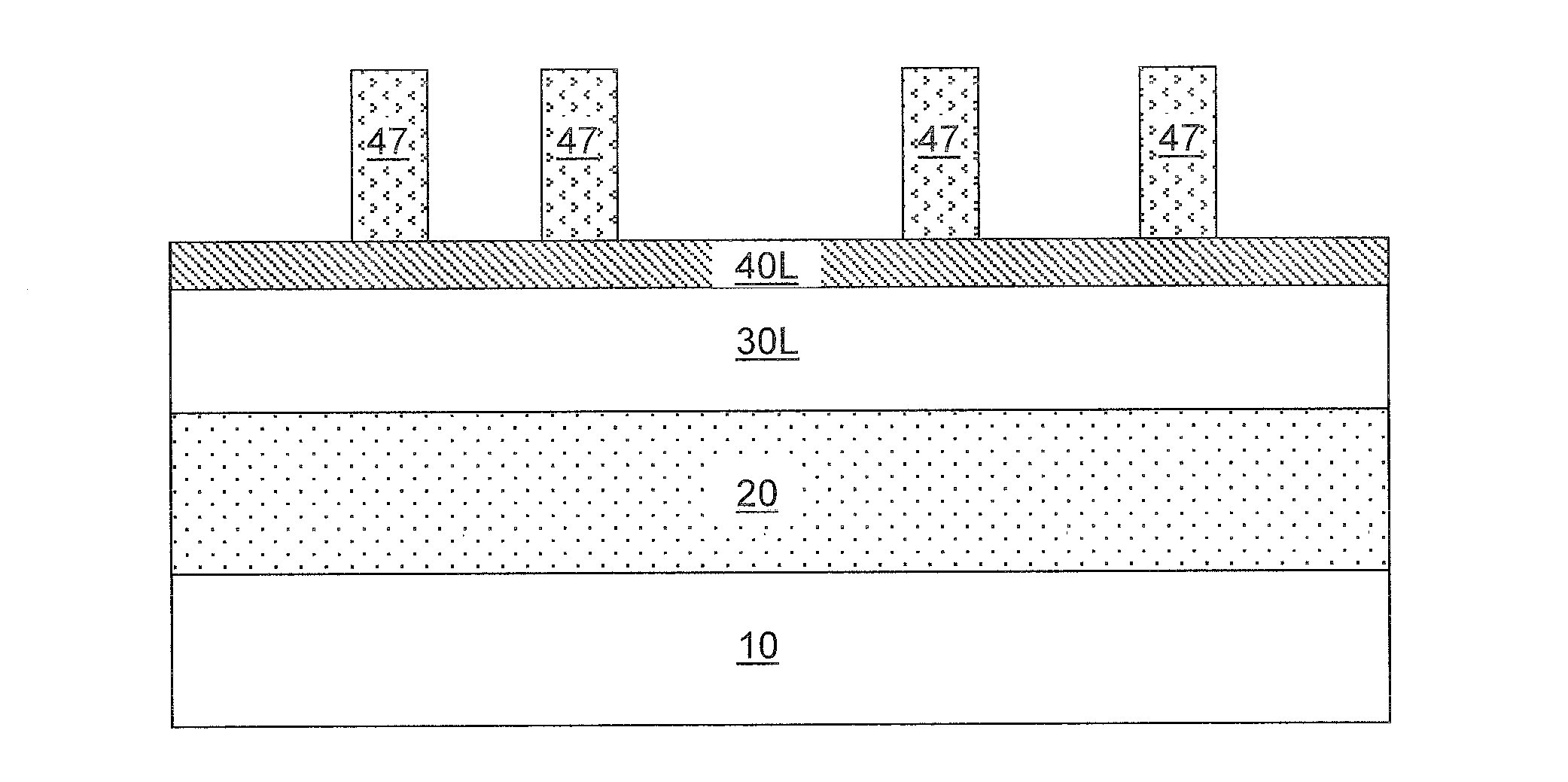Finfet-compatible metal-insulator-metal capacitor
a metal-insulator and capacitor technology, applied in the direction of diodes, semiconductor devices, electrical apparatus, etc., can solve problems such as planar capacitors, and achieve the effect of increasing capacitan
- Summary
- Abstract
- Description
- Claims
- Application Information
AI Technical Summary
Benefits of technology
Problems solved by technology
Method used
Image
Examples
first embodiment
[0040]Referring to FIGS. 1A and 1B, a first exemplary semiconductor structure according to the present invention includes a substrate containing a vertical stack of a handle substrate 10, an insulator material layer 20, and a top semiconductor layer 30L. The handle substrate 10 may include a semiconductor material, an insulator material, a conductive material, or a combination thereof. The handle substrate 10 can provide mechanical support for the insulator material layer 20 and the top semiconductor layer 30L.
[0041]The insulator material layer 20 includes an insulator material such as silicon oxide, silicon nitride, silicon oxynitride, or a combination thereof. The insulator material layer 20 provides electrical isolation between the top semiconductor layer 30L and the handle substrate 10. The thickness of the insulator material layer 20 can be from 30 nm to 2 microns, and typically from 50 nm to 500 nm, although lesser and greater thicknesses can also be employed.
[0042]The top sem...
second embodiment
[0065]Referring to FIGS. 8A and 8B, a second exemplary semiconductor structure according to the present invention is shown after deposition of the MOL dielectric layer 90 and formation of various contact via structures (92, 94, 96, 98). The MOL dielectric layer 90 is omitted from the top-down view of FIG. 8A for clarity. The second exemplary semiconductor structure can be derived from the first exemplary semiconductor structure by omitting the formation of the fin cap dielectric layer 40L. Correspondingly, the at least one first dielectric fin cap portion 40A and the at least one second dielectric fin cap portion 40B are not formed. Each first fin structure 33A includes a sub-portion of a first semiconductor material portion 30A, and each second fin structure 3313 includes a second semiconductor material portion 30B. The top surfaces of the at least one first semiconductor material portion 30A contacts a bottom surface of the lower conductive plate 50. The top surfaces of the at lea...
third embodiment
[0066]Referring to FIGS. 9A and 9B, a third exemplary semiconductor structure according to the present invention is derived from the first exemplary semiconductor structure of FIGS. 1A and 1B by etching through unmasked portions of the fin cap dielectric layer 40L and the top semiconductor layer 30L and subsequently etching into upper portions of the insulator material layer 20. The insulating material layer 20 including patterned recessed areas is herein referred to as a patterned insulating material layer 20′. The first masking layer 47 is subsequently removed. The recess depth rd, which is the vertical distance between the topmost surfaces of the patterned insulating material layer 20′ and the recessed surfaces of the patterned insulating material layer 20′ can be from 1% to 99%, and typically from 10% to 90% of the thickness of the insulating material layer 20 prior to patterning.
[0067]The patterned insulating material layer 20′ includes a planar portion, which is herein referre...
PUM
 Login to View More
Login to View More Abstract
Description
Claims
Application Information
 Login to View More
Login to View More - R&D
- Intellectual Property
- Life Sciences
- Materials
- Tech Scout
- Unparalleled Data Quality
- Higher Quality Content
- 60% Fewer Hallucinations
Browse by: Latest US Patents, China's latest patents, Technical Efficacy Thesaurus, Application Domain, Technology Topic, Popular Technical Reports.
© 2025 PatSnap. All rights reserved.Legal|Privacy policy|Modern Slavery Act Transparency Statement|Sitemap|About US| Contact US: help@patsnap.com



